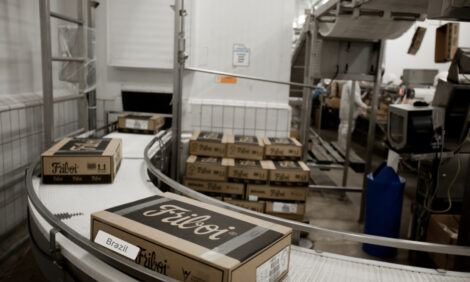



Demand More From the Herd
US - The headline reads, “Beef prices skyrocket.” A little more information comes with, “Wholesale beef prices at record levels.” Another adds, “Beef exports up 7% in two months.” The articles that follow those zingers all explain different facets of the supply and demand equation, explains Miranda Reiman, Certified Angus Beef.Beef prices are up because of a shrinking cowherd, accelerated by drought. Cattle prices are 25 per cent higher than this same time a year ago, but can they stay there? That all depends on whether the consumer is willing to pay.
Of course if the American customer won’t shell out the dollars, there are more buyers overseas. They are cashing in on a weaker US dollar.
Perhaps the most telling article related to beef demand was posted by Oklahoma State’s Darrell Peel at the beginning of the year: “Beef Demand Is the Key to Cattle Prices In 2012.”
He suggests: “Cattle and beef prices will be higher in 2012, but just how much higher depends on consumer demand.” Although many brilliant ag economists have devoted countless hours of study to it, beef demand will never be an exact science. There are too many factors at work, but one thing is for certain, true demand increases aren’t simply selling more product or even higher retail prices.
Demand only moves up when volume times price moves up.
So what can individual farmers and ranchers do to move that needle? Listen to consumer preferences.
Work at Kansas State recently showed demand for USDA Choice beef increased 20 per cent from 2002 to 2010, but that was outpaced by a premium Choice brand. Consumers want quality. Taste panel after taste panel proves what people have been saying with their wallets all along. And it should be common sense. After all, what kind of beef do you like to eat?
But eating experience isn’t the only factor.
As Mr Peel notes: “Consumer decisions are driven by value, which is a combination of preferences and price of a product relative to other products that may be substitutes.” He was mainly talking about folks substituting cheaper pork and poultry options for beef purchases, but this substitution can work in the other direction, too.
A dinner party might call for a little extra assurance that the center-of-the-plate item will be just right. So consumers will trade up from Select to Choice beef or from Choice to premium Choice or Prime.
Mr Peel is spot-on when he says decisions are driven by value. If they’re going to pay more (overall beef prices rose 10 per cent last year), then it’d better live up to the expectations.
That’s your job. Increasing quality bolsters the entire market. Better beef also gives the US a competitive advantage in the export markets, allowing international beef sales to flourish, regardless of what happens in the US.
Keeping customers is the name of the game. Whether you’re a feeder wanting repeat visits from packer-buyers or a cow-calf producer looking for competing bids at the sale barn, there’s a common thread: beef demand.
Increasing it leads to more money at the farm level. Data from Montana State noted a 66 per cent decline in US beef demand from 1976 to 1999 correlated with a 40 per cent reduction in fed-cattle price and a 48 per cent decrease in feeder-calf prices.
Nobody wants to go back to that. Being aware of recent history seems motivation enough to keep a steady focus on all the ways to improve demand for US beef.
TheCattleSite News Desk


